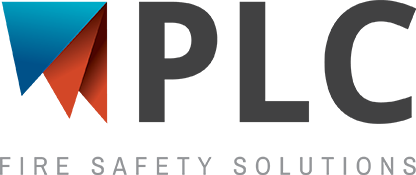The development of building codes and tragic events are very closely linked. Building and fire codes have been developed over the last 100 plus years as a result of multiple small fire incidents that identify an unsafe trend or by a large multiple fatality fire that catches the attention of the nation.
Building Code requirements such as, fire separations between floors and exits, minimum exit widths, and exit door swing directions are all a result of tragic incidents where occupants have lost their lives. Figure 1 shows a timeline with examples of fire related tragedies and the development of certain building codes.
Figure 1: Building Code Timeline

Building and fire codes have been evolving over time, such that some design features of existing buildings may not always satisfy the current building code requirements. Building codes such as the National Building Code of Canada (NBCC) [1] are intended to be applied to new buildings or for the alteration or change of use existing buildings.
The application of the current codes to existing and, more importantly, to historical buildings can sometimes be problematic. On the one hand, codes have evolved to correct unsafe designs and the design of historical buildings tend to include more than one unsafe feature. On the other hand, historical buildings are a valuable aspect of society and it is important to preserve the features that make historical buildings special. The NBCC explanatory material states the following:
- It is not intended that the NBCC be used to enforce the retrospective application of the new requirements to existing buildings.
- Code application to existing buildings requires careful consideration of the level of safety needed for that building … an analytical process similar to that required to assess alternate design proposals.
- Successful application of the Code to existing construction becomes a matter of balancing the cost of implementing a requirement with its relative importance to the overall Code objectives.
Fires occur in all sorts of buildings; some fires are relatively small and cause little damage to property or life safety. Other’s such as the fire incidents referenced in Figure 1 spread out of control and have tragic consequences with numerous deaths, including children. When reviewing these fires and the associated fatalities, four conditions are usually present.
- Highly flammable finishes
- Lack of early notification
- Lack of, or inadequate automatic suppression
- Inadequate means of egress (exits)
As fire and life safety professionals, when renovating historical buildings, we have to find ways to provide the required level of life safety, while maintaining the historic fabric or design. Generally historical buildings have been designed and constructed prior to the corrective revisions of the codes that prescribe acceptable solutions to the four conditions listed above. The finishes are usually wood with 100 years of layers of varnish. There is usually inadequate fire alarm and sprinkler protection. But the most difficult design flaw of historical buildings is the lack of safe means of egress facilities.
Some jurisdictions have developed sections of their building codes that are dedicated to existing buildings. The Ontario Building Code’s [2] has Part 11, Renovation, which provides compliance alternatives to the current prescriptive solutions which, may be difficult to apply to existing buildings. The National Fire Protection Association (NFPA) has developed NFPA 914, Code for Fire Protection of Historic Structures [3]. NFPA 914 mainly provides guidance on how to evaluate performance-based solutions and also provides an abundance of resource material in the annexes.
In all cases it is the fire and life safety professional’s duty to ensure that the design and construction of a historical building rehabilitation is completed in such a way to provide an environment that is reasonably safe from death or injury in fire and similar perils .
REFERENCES
[1] “National Building Code of Canada.” Canadian Commission on Building and Fire Codes, 2015.
[2] “Ontario Building Code.” Ministry of Municipal Affairs and Housing, Building and Development Branch, 2006.
[3] “NFPA 914, Code for Fire Protection of Historic Structures.” National Fire Protection Association, 2010.







